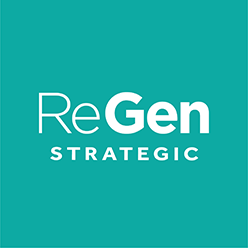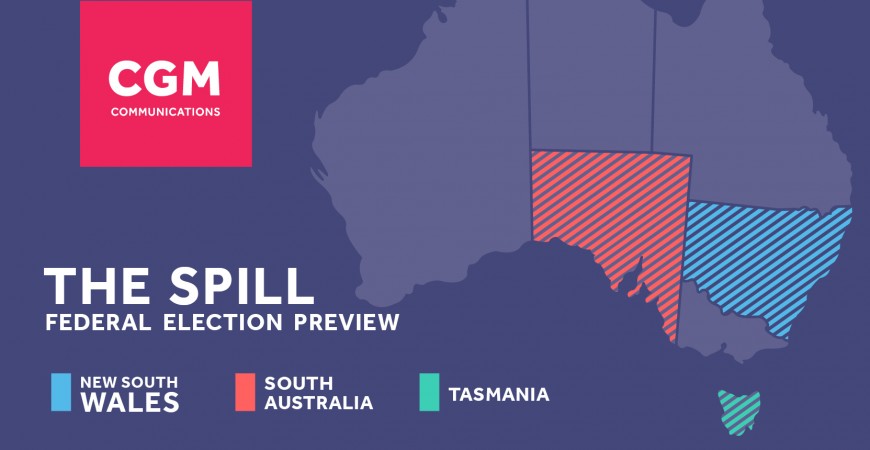Since last week’s edition of The Spill, Newspoll has published its quarterly state-by-state breakdowns, with the results broadly consistent with the modelling we presented last week from William Bowe at The Poll Bludger.
The upshot is the coalition is currently set to lose seats in the Labor held states of Victoria, Queensland and Western Australia, as well as in the Liberal-held states of New South Wales, South Australia and Tasmania.
Of course, there is still plenty of water to go under the bridge before the election and things may change. The success of the opening strategies in New South Wales and Victoria will be critical, as will the easing of border restrictions in Queensland and Western Australia.
To win, Mr Morrison likely needs to hold the line in South Australia and Tasmania, and turn things around in New South Wales, so he wins seats to offset possible losses in the Labor states.
This week, we do a deep dive on the Liberal states critical to both Mr Morrison’s hopes of surviving and Anthony Albanese’s aspirations of becoming PM.
Tasmania
While there isn‘t enough data available to calculate a state-based swing in Tasmania, the consistency of the swings to Labor currently being recorded around the country suggest the Liberals may have trouble defending their most marginal seat, Bass.
BASS (Liberal 0.4%)
The Liberals’ most marginal electorate is located on the north-eastern corner of Tasmania, with about three quarters of its voters living in the city of Launceston. Bass is also the most volatile electorate in the country, having changed hands at nine of the last 11 elections. This included 2019, when one-term Labor member Ross Hart was defeated by the current Liberal member, Bridget Archer, after a 5.8 per cent swing. This was preceded by swings of more than 10 per cent towards the Liberals in 2013 and against them in 2016. Bass ranks ninth lowest in the country for median household income - though still higher than neighbouring Braddon and Lyons, which typically record similar swings. Bass will again be contested for Labor by Hart, who is now the principal of a law firm in Launceston.
South Australia
Despite all the talk about the politics of naval contracts, there is only really one marginal seat in South Australia, albeit a very valuable seat following the decision to perform submarine maintenance work in SA instead of Western Australia. With a swing of 3.2 per cent currently being recorded in South Australia in our model (2.3 per cent in Newspoll), the Liberals are under pressure to retain Boothby.
BOOTHBY (Liberal 1.4%)
Located in southern Adelaide, Boothby runs from Glenelg through to the suburbs immediately south of the city. Held by the Liberals since 1949, Boothby has been trending to Labor over time. Two-term member Nicolle Flint is retiring, after her margin was halved to 1.3% per cent in 2019 and only marginally improved at the redistribution. Boothby ranks #15 for those identifying themselves as having no religion, a useful proxy for progressive sentiment and the type of affluent inner urban demographic that has been drifting away from the Liberals. However, it also ranks #1 in the country for persons 80 and over. The Liberal candidate is Rachel Swift, a factional moderate who was chosen ahead of the favoured candidate of Flint, a conservative. Labor's candidate is Louise Miller-Frost, state chief executive of the St Vincent de Paul Society.
New South Wales
To say New South Wales is critical to the election outcome is an understatement. Mr Morrison is hopeful of making gains among six Labor-held marginals in New South Wales. However, based on the current 3.2 per cent swing to Labor in our model (3.8 per cent in Newspoll), the Liberals would struggle to hold all its seats.
REID (Liberal 3.2%)
Centred around Homebush 15 kilometres west of central Sydney, Reid was retained for the Liberals in 2019 by Fiona Martin, despite the retirement of Craig Laundy, a noted Malcolm Turnbull ally who gained the seat for the Liberals for the first time in 2013. There was a 1.5 per cent swing to Labor in 2019, reflecting the party's relatively good performance in inner urban areas under Bill Shorten. Reid ranks #10 for non-English speakers, #3 for persons of East/South-East Asian ancestry and #7 for persons in their twenties, but contains few young families. Labor is yet to preselect a candidate, with Sally Sitou, a University of Sydney doctoral candidate and ministerial staffer to Jason Clare, and Frank Alafaci, president of the Australian Business Summit Council, both putting their hands up.
LINDSAY (Liberal 5.0%)
An outer western Sydney seat centred around Penrith, Lindsay has been a hotly contested seat since Jackie Kelly unexpectedly gained it for the Liberals in 1996. Melissa McIntosh gained it for the Liberals in 2019 with a 6.2 per cent swing after Labor punted Emma Husar. Husar’s win in 2016 was the only time since 1996 the seat was not won by the winning party at the election. Lindsay is an example of the urban fringe pattern experienced in recent elections, which saw a weak result for the Liberals under Malcolm Turnbull followed by a stronger one in 2019. Based on current polling results, Lindsay is not at risk of falling to Labor, but is worth keeping an eye on given its history. Labor is yet to endorse a candidate.
HUGHES (Liberal 9.8%)
An outer southern Sydney seat that has become secure for the Liberals since the Howard government came to power in 1996, Hughes is likely still safe for the Liberals. However, it is of interest given incumbent Craig Kelly's decision to run as the United Australia Party candidate.
MACQUARIE (Labor 0.2%)
Macquarie combines two geographically and electorally distinct areas separated by the Blue Mountains National Park: the solidly Liberal-voting Hawkesbury River area and the largely Labor-voting communities in the Blue Mountains, notably Springwood and Katoomba. In another example of the urban fringe pattern, Susan Templeman gained the seat for Labor in 2016 with a 6.7 per cent swing, then was pushed close to defeat by a 2.0 per cent swing to the Liberals in 2019. Ranks #16 in the country for English-only speakers and #3 for employment in education and training. The Liberals are yet to endorse a candidate.
EDEN-MONARO (Labor 0.8%)
Eden-Monaro is located on the south-eastern corner of New South Wales, encompassing the southern coast and rural territory further inland. It ranks #20 in the country for highest median age, with particularly large numbers in their fifties and sixties. A famous bellwether seat until Mike Kelly recovered it for Labor in 2016 and hung on in 2019, Eden-Monaro was the electorate most heavily affected by the pre-COVID bushfires. Following the retirement of Mike Kelly in 2020, Labor’s Kristy McBain retained the seat for Labor by 0.4 per cent on the back of preferences from the Shooters, Fishers and Farmers party, and the dysfunction of the Nationals, whose campaign was complicated by state party leader John Barilaro's withdrawal from preselection. The by-election result also suggested that bushfire negatives for the Liberals under Mr Morrison were negated by the Prime Minister’s surge in popularity in the early days of the pandemic. A 10.6 per cent gap in Labor's House and Senate vote in 2019 indicated a strong personal vote for Mr Kelly. Without this advantage and the advantage oppositions traditionally enjoy at a by-election, Labor may struggle - unless the bushfires and their aftermath remain a factor.
DOBELL (Labor 1.5%)
Located on the coast, just north of metropolitan Sydney, Dobell includes the retirement havens of The Entrance and Bateau Bay, lower-income Wyong, and demographically undistinctive suburbs like Gosford. Dobell ranks #15 in the country for persons aged 80 and over and #20 for persons speaking only English at home. It was held by Craig Thompson before being gained for the Liberals in 2013, then recovered for Labor in 2019 by Emma McBride. Dobell’s behaviour has been typical of urban periphery seats in that the Liberals did not perform well when Malcolm Turnbull was leader but recorded an above-average swing in 2019. A comparison of House and Senate results suggests McBride has a strong personal vote: she received 41.5 per cent of primary votes, compared with Labor’s Senate vote of 31.6 per cent, a 9.9 per cent difference compared with 4.7 per cent for Labor statewide.
GILMORE (Labor 2.6%)
Bordered to the south by Eden-Monaro, Gilmore is located on the south coast of New South Wales, stretching from the southern Illawarra region to Batemans Bay. The seat was an anomalous Labor gain in NSW at the 2019 election, when Fiona Phillips gained a 3.3 per cent swing after the retirement of Ann Sudmalis. However, the Liberal vote may have been dampened by local discontent over the manner in which their candidate, Warren Mundine, was imposed by head office at the expense of Grant Schultz, who had won a local preselection vote. Schultz ran as an independent and polled seven per cent. Minus these complications, the Liberals are hopeful of recovering the seat. It has been reported the Liberals are hoping to persuade Andrew Constance, state Transport Minister and member for the corresponding state seat of Bega, to run for the seat. Constance received sympathetic media attention after nearly losing his Malua Bay house in the 2019/20 bushfires. Conversely, the local impact of the bushfires may linger as a negative for the Liberals.
GREENWAY (Labor 2.8%)
Covering suburbs around 30 kilometres west of Sydney, Greenway tends to be stronger for Labor around Blacktown in the south and for the Liberals around Riverstone in the north. Michelle Rowland has held the seat for Labor since a favourable redistribution in 2007, holding out against a 3.3 per cent swing in 2019. Greenway is dominated by young families, ranking #7 for children under ten, #18 for persons in their thirties and #15 for mortgages, with correspondingly few people in their fifties and above. It ranks #2 for persons of Indian and Sri Lankan ancestry, who account for 13.9 per cent of the population. The Liberals have not yet pre-selected a candidate.
HUNTER (Labor 3.0%)
Covering the interior of the Hunter region, Hunter strikingly recorded a 21.6 per cent One Nation vote in 2019 - the highest in the country - and a 9.5 per cent swing against Labor. The state seat of Upper Hunter largely corresponds, with a state by-election in May producing a rare pro-government swing of 3.3 per cent which allowed the seat to be retained by the Nationals. However, this was prior to the recent COVID outbreak in NSW. Labor's task is complicated by the retirement of Joel Fitzgibbon, who succeeded his father, Eric Fitzgibbon, as member in 1996. Labor has pointedly preselected a former coal miner, Daniel Repacholi, who also represented Australia five times in pistol shooting at the Olympics. The Nationals have preselected James Thomson, a community relations officer at Maitland Christian School. The electorate ranks #2 for percentage of the population born in Australia, and #4 for percentage of the workforce employed in mining, as well as electricity, gas, waste and water.
 ReGen Strategic
ReGen Strategic